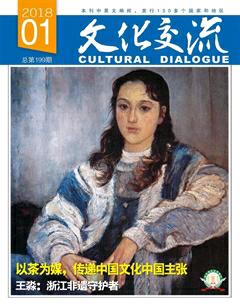田浩征和蘇達立:救難鑄真情
史偉東+羅巍
他們,一位是來自英國劍橋的醫學博士,一位是出生杭州本土的法律界精英,由于80年前的那場戰爭結下了深厚的友情,多年以后雖相隔天涯仍然書信往來。
如今,一幅錦幛和一紙證書成為了這份患難真情的最好見證。經筆者多方打探,終于與如今在澳大利亞的本文主人公之一的蘇達立的外孫Steve Harris取得聯系,他發來了珍藏多年的一幅錦幛的照片。家住杭州丁橋的田嘉年老人和他的兒子田建鈞看到這幅錦幛的彩色打印件時,激動不已,因為制作和贈送錦幛的領銜者正是他們的父親和祖父——田浩征(1905-1968),時任杭州廣濟醫院重傷分院總干事。而受贈人則是本文另一位主人公——杭州廣濟醫院(今浙醫二院前身)院長蘇達立(Stephen Douglas Sturton, 1896-1970),錦幛落款時間為民國二十八年(1939年)五月。
攜手危急時
故事要從1937年中日淞滬會戰講起。據英國《教會醫院》雜志總第42期刊登的蘇達立所寫《兩年戰爭中的教會醫院》一文記載:廣濟醫院作為杭州醫療條件最好的醫院,從開戰第一天起就不斷有傷兵自前線運抵。著名的空戰英雄高志航即是在廣濟醫院接受手術的,杭州以廣濟醫院、仁愛醫院(今紅會醫院前身)為主共接收了1萬多名傷兵。
到11月上旬,日軍突然在杭州灣金山衛一帶登陸,京滬杭均危在旦夕,浙江省和杭州市開始安排撤退。根據國民政府浙江省主席朱家驊指示,杭州市政府留下1千多名無法轉移的重傷官兵,委托廣濟醫院照管。雙方商定利用廣濟醫院對面的樹范中學開辦安置重傷員的第二分院。廣濟醫院院長蘇達立推薦自己的好友田浩征律師出任廣濟臨時重傷醫院總干事,負責日常行政事務。
蘇達立與田浩征相識于共同參加的杭州扶輪社的公益慈善活動,扶輪社是起源于美國的國際性慈善組織,杭州扶輪社(全稱國際扶輪社杭州分社)成立于1931年,蘇、田二人都是創始會員。蘇達立畢業于劍橋大學醫學院,1921年受英國圣公會委派來廣濟醫院,1928年任院長。田浩征比蘇達立小9歲,是圣約翰大學、東吳大學的雙學士,在杭州擁有自己的律師事務所,擔任多家單位的法律顧問,其中就包括廣濟醫院。扶輪社對會員資格要求嚴苛,必須是社會精英,每個行業還只能入一人為代表。
田浩征和蘇達立在抗戰前具體一起參與了哪些公益活動已不可考,廣濟醫院在1936年創立了殘廢兒童院,由骨科名醫牛惠生主持,很可能田浩征也積極加入了運作,因此蘇達立才會第一時間想到由田浩征來管理傷兵醫院。
蘇達立除了救治傷兵外,還擔任由國際紅十字會杭州分會等組織的“國際救濟委員會”的秘書長,預備救濟日軍占領后涌現的大量難民。救濟會以在杭外僑為主,由宗教界、商界等各界人士組成,田浩征也是其26名領導成員之一。
img src="http://img1.qikan.com.cn/qkimages/whjl/whjl201801/whjl20180115-2-l.jpg" alt="" />
救難淪陷區
1937年12月24日,杭州淪陷,杭州頓時從天堂變成了地獄!
在此危難時刻,蘇達立、田浩征及廣濟醫院全體同人盡忠職守、不避艱險,冒死庇護難民和傷兵。正如圣公會浙江教區英籍主教高德斯所寫:“我們規定日常的工作,對于醫院以內的事情,蘇達立醫生一概不管,他專門負責外面救護難民的事情,醫院里的汽車和救護車歸他使用。”蘇醫生好像大片里超人、蝙蝠俠那樣扶危濟困的白衣大俠,乘坐涂著紅十字標志的救護車,日夜在杭州城內和郊外穿梭,如天使一般降臨人間最需要他的地方救苦救難。
到1939年5月,難民和傷兵收容工作都告一段落,蘇達立準備陪夫人回英國休養。田浩征面對“戰友”歸國,依依不舍,就想起和廣濟同人一起以贈送錦幛的方式向院長致敬。錦幛紅底黑字,中間是“澤我同胞”四個大字,右首書“蘇公達立暨師母歸省祖國紀念”,接著詳述蘇達立救難事跡:
“蘇公來華行醫傳道,以基督耶穌之心療治疾病、拯救靈魂,凡一切善舉不避艱險,竭力進行。如年前事變時,組織國際紅十字分會,收容傷兵和難民,并冒萬險赴留下鎮、閑林埠、小和山、喬司、閘口等處救回難民無數,凡此功德抗日人士有口皆碑。茲值蘇公伉儷因例假回國休息,本院同人特繡此幛,以資紀念。”
這里提到的幾個地名正是日軍在杭州燒殺比較嚴重甚至發生大屠殺的地方,蘇達立在自己的回憶錄《從教會醫院到集中營》(1946年倫敦出版)里詳細描述了如何勇蹈險境,尋找幸存者、救回傷者的情形。兩者對照就是日軍在杭州犯下累累罪行的鐵證,也是蘇達立先生紅十字精神的閃光見證。
錦幛左下角是醫院全體52名中國籍同人的名字,田浩征居第一列中心位置,顯示了他在救難中的重要作用及與蘇達立非同一般的交誼。巧合的是田浩征的孫子田建鈞也珍藏著一幅錦旗,它是田建鈞2005年搬家整理舊物時發現的,其右上方寫著“惠我”二字,落款是“杭州廣濟醫院第二分院全體傷兵謹具”。“惠我”——“澤我”,何其相似!這是被澤受惠的同胞對田、蘇兩位在杭州救難中并肩戰斗的中外義人的衷心褒獎。
錦旗記述了田浩征“夙夜”“積勞”主持傷兵分院,表達將士們“余生敢忘盛德”、“藉資不忘”的拳拳之心。署明時間為蘇達立歸國后一個月的1939年6月,當時田浩征正準備將最后一批傷愈官兵安排轉移。那些殉難的將士,也是由田浩征予以料理后事。
田建鈞在2017年初建了個微信群,成員主要是杭州救難當事人的后代以及對這段歷史感興趣的學者、研究者,有一位遠在廣西的群友就來詢問爺爺在杭州的埋葬地。原來他的爺爺叫江晶熙,廣西藤縣人,他作為桂軍176師謝鼎新團的少校營長參加了淞滬會戰,1937年10月23日在爭奪大場戰役中不幸被日軍炸飛右腿,后轉運至杭州廣濟醫院救治,終因傷勢過重犧牲。田浩征當年詳細記錄了這些殉國烈士的情況,可惜具體資料已毀于“文革”,田建鈞根據爺爺曾經對子女的講述,指出大概的瘞骨處為今天杭州金衙莊靠近城河一帶。這樣烈士后裔到杭州有了具體的憑吊之所,也算是告慰了忠魂烈骨以及田律師的在天之靈——他未盡的事宜后繼有人了。endprint
真情越時空
蘇田二人的友情還可以從田浩征之子田嘉年保存的一份證明中得到印證。蘇達立于1939年回國后安頓好了妻子和兩個女兒,毅然獨自返回苦難中的中國,決心與杭州人民同呼吸、共命運。太平洋戰爭爆發,他隨即因“醫治中國傷兵”被日軍投入集中營。1945年日本投降,他獲釋回到了廣濟醫院院長的崗位,立刻想做的是為田浩征出具一張“擔保書”,擔保他在抗戰中的“言行系一愛國高級知識國民”,并特別指明田浩征在1942年廣濟醫院被日軍強行征用失去后援的情況下,還“冒最大之危險招待尚未退入后方之受傷將士二十余人,使之安全退入后方,此尤屬難能可貴”。
隨后兩人又不約而同分別選擇到劍橋大學和哈佛大學短期進修,準備以更精湛的專業技能為杭州人民服務。不過兩人咫尺天涯的時刻終將來臨,此生再難相見。
1952年,蘇達立將廣濟醫院完整移交給人民政府后,即將要離開他生活了近30年的杭州及美麗西湖……
一天,田嘉年記得很清楚,是周末。
他和父親、蘇達立一起騎著自行車來到錢塘江邊。蘇達立站在錢塘江大橋上,眼含熱淚用英語說:“等我下次再經過這座大橋,我要說再見了,杭州。”臨走蘇達立將自己的一批藏書送給田浩征,并委托他處理相關私人財產事宜。
蘇醫生在短暫回國休整后,他還是要求回到中國——當時唯一的選擇是香港。于是他又以他精湛的醫療技術服務于香港養和醫院,直到重病纏身。1970年,他在英國老家劍橋去世。上世紀50年代,蘇達立曾邀請田浩征到香港工作,但田浩征覺得自己可以在祖國開展全新的事業,因為他精通拉丁文,正是祖國的醫藥事業急需的人才,于是選擇留下。
田浩征過世于1968年,他和蘇達立在文革前一直保持通信聯系,但今天這些信件都已亡佚。唯有蘇達立送給田浩征的大量書籍中的一小部分幸存下來,成了他的孫子田建鈞追憶先人的實物寄托,也是他追尋祖父生平的緣起和起點。
現在田建鈞與中外許多救難當事人的后代建立了聯系,他真心希望能與包括蘇達立外孫Steve Harris在內的這些后代們進行一場大聚會,以緬懷及續寫當年的“救難精神和真情”。
蘇達立、田浩征以及其他中外仁人志士譜寫的人道救難精神長存!
A Friend in Need Is A Friend Indeed
By Shi Weidong & Luo Wei
The friendship between a Doctor of Medicine from Cambridge, England and a lawyer from Hangzhou beautifully illustrates ‘a friend in need is a friend indeed. A printed copy of the picture of the brocade piece stirred the memory of Tian Jianian, now living in Hangzhous Dingqiao, about his father Tian Haozheng (1905-1968). The picture of the silk piece was sent by Steve Harris, the grandson of Stephen Douglas Sturton (1896-1970), president of Hangzhou Guangji Hospital (todays No. 2 Affiliated Hospital of the Medical School of Zhejiang University in Hangzhou) during Chinas War of Resistance against Japanese Aggression.
The story started from the Battle of Shanghai in 1937, one of the largest and bloodiest battles of the resistance war, described as “Stalingrad on the Yangtze”. Considered the best hospital in Hangzhou, Guangji Hospital worked with todays Red Cross Hospital and took in more than 10,000 wounded soldiers from the battle, according to the 42nd issue of the magazine.
In early November, 1937, with the fall of Baoshan, the Chinese Army moved into defensive positions. More than 1,000 seriously injured soldiers had to be left behind and stay with Guangji Hospital. The Shufan High School across the street was re-modeled into the hospitals emergency branch in the event of the war. Stephen Douglas Sturton, then president of the hospital, recommended his lawyer friend Tian Haozheng, who was running a law firm in Hangzhou at that time, for the position of Secretary-general of the emergency division.endprint
The two had known each other at the Hangzhou branch of the Rotary International, an international service organization whose stated purpose is to bring together business and professional leaders in order to provide humanitarian services and to advance goodwill and peace around the world. The members of the organization are known as the Rotarians. Tian and Sturton were founding members of the Hangzhou club, which was founded in 1931.
Guangji Hospital launched its Disabled Childrens Department in 1936. It could reasonably be inferred that as a Rotarian, Tian Haozheng was an influential driver behind the hospitals humanitarian deeds. The two also worked together as the leaders of various other relief activities organized by the Hangzhou division of the Red Cross.
December 24,1937 saw the fall of Hangzhou. In the days when the ‘Paradise on Earth was turned into a purgatory, Stephen Douglas Sturton and Tian Haozheng motivated the entire medical team of the hospital to protect the soldiers at the risk of their own lives. The Cambridge man and his Red Cross ambulance were seen in the most dangerous places in the Hangzhou proper and the outskirts day and night, driving wounded refugees to the hospital like a fearless Superman in a white uniform.
Before returning to the UK for a vacation with his wife in May 1939, Doctor Sturton received an embroidered brocade piece from the hospital. The names of 52 Chinese doctors and nurses of the hospital, with ‘Tian Haozheng being the first one in the list, were embroidered in a corner of the piece.
Seeing his wife and two daughters settling down back in the UK, Doctor Stephen came back to Hangzhou to resume his humanitarian work. He was put into the concentration camp by the Japanese after the outbreak of the Pacific War, and was set free in 1945. Later the two had to part ways to engage in advanced studies in Cambridge and Harvard University. In 1952, Stephen resigned from his work with the hospital and returned to his home country.
The friendship of the two ‘comrades-in-arms has been further confirmed by Tian Jianian, the son of Tian Haozheng. He still remembers the farewell day like it was yesterday. “The three of us went to the Qiantang River Bridge on our bikes. ‘Next time I goes across the bridge, it will be saying goodbye to Hangzhou, the doctor murmured in English, his eyes filled with tears.”
The doctor spent several years in Hong Kong in the 1950s, and rested in peace in his Cambridge home in 1970. Tian Haozheng died in 1968. All the letters written by the two to each other in the 1950s and 1960s were lost. The only things for Tian Jianjun, the grandson of Tian Haozheng, to keep as the recollections, are a few books given to Tian Haozheng by the British doctor.
“I am looking forward to a reunion that is to bring together the descendents of the unsung heroes and friends of my grandfather someday in the near future,” Tian Jianjun says.endprint

